Big Brown Bat
- March 25, 2024
- 0 comment
The Big Brown Bat, scientifically known as Eptesicus fuscus, is a captivating mammal found across North America. Renowned for its dark brown fur and medium-sized stature, this bat species boasts a wingspan ranging from 11 to 13 inches and a body length of approximately 3 to 5 inches, weighing around 0.5 to 1 ounce. Its glossy fur varies in shade from reddish-brown to almost black, adding to its distinct appearance. These adaptable creatures thrive in various habitats, including forests, urban areas, and agricultural landscapes, where they play a vital role in controlling insect populations.
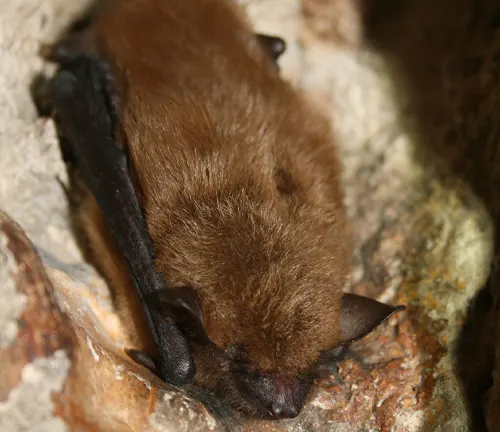
With their nocturnal lifestyle and sophisticated echolocation abilities, Big Brown Bats hunt insects like moths, beetles, and mosquitoes with remarkable precision, aiding in pest management and ecological balance. They form colonies for warmth and protection, especially during maternity seasons. Despite facing threats like habitat loss and pesticide exposure, conservation efforts strive to safeguard their habitats and raise awareness about their significance in maintaining healthy ecosystems. Through continued research and responsible coexistence, we can ensure the survival of these fascinating creatures for generations to come.
| Specifications | Details |
|---|---|
| Scientific Name | Eptesicus fuscus |
| Common Name | Big Brown Bat |
| Size | Wingspan: 11 to 13 inches<br>Body length: 3 to 5 inches |
| Weight | 0.5 to 1 ounce |
| Fur Color | Dark brown, ranging from reddish-brown to almost black |
| Habitat | Diverse habitats including forests, urban areas, and agricultural landscapes |
| Distribution | Across North America |
| Diet | Primarily insects such as moths, beetles, and mosquitoes |
| Nocturnal Activity | Active during the night |
| Echolocation | Sophisticated system for navigation and hunting |
| Social Structure | Form colonies for warmth and protection, especially during maternity seasons |
| Threats | Habitat loss, pesticide exposure, disturbance of roosting sites |
| Conservation Status | Efforts to safeguard habitats and raise awareness |
Big Brown Bat, scientifically known as Eptesicus fuscus, is a remarkable creature belonging to the Chiroptera order. Found widely across North America, these bats are known for their distinct physical features, nocturnal lifestyle, and significant ecological role. Let’s delve into the world of Big Brown Bats to uncover their secrets and importance in our ecosystem.
Physical Characteristics of Big Brown Bat
Size and Weight
The Big Brown Bat typically has a wingspan ranging from 11 to 13 inches (28 to 33 centimeters). In terms of body length, they measure approximately 3 to 5 inches (7.6 to 12.7 centimeters). Despite their relatively small stature, these bats are robust and agile flyers. In weight, Big Brown Bats usually weigh between 0.5 to 1 ounce (14 to 28 grams).
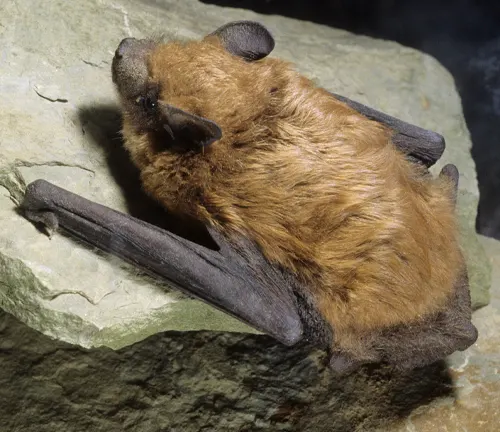
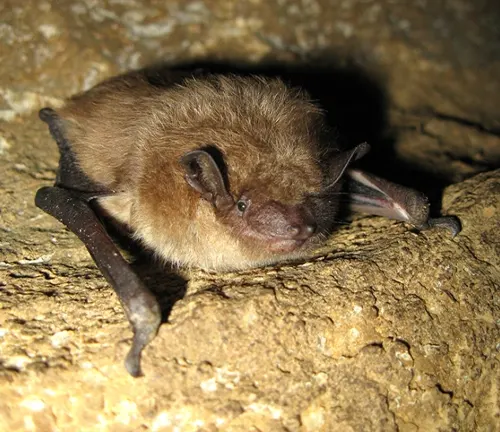
Fur Color and Texture
As their name suggests, Big Brown Bats are characterized by their dark brown fur, which can vary slightly in shade. Their fur appears glossy in texture, contributing to their sleek appearance. Depending on individual variation and environmental factors, the fur color may range from reddish-brown to almost black. This fur provides insulation and protection against the elements as these bats navigate through their nocturnal habitats.
These physical characteristics enable Big Brown Bats to thrive in various environments across North America, playing a vital role in controlling insect populations and maintaining ecosystem balance.
Habitat and Distribution
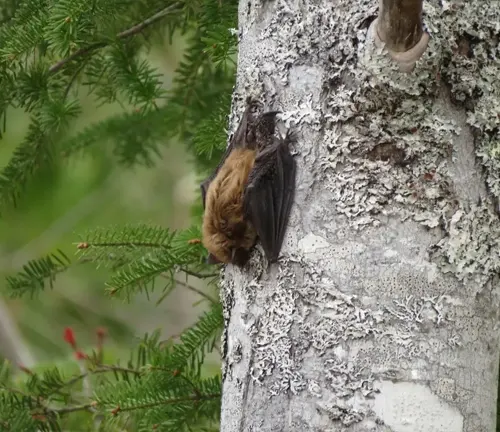

Big Brown Bats are highly adaptable mammals that can be found in a wide range of habitats throughout North America. They are commonly found in forests, urban areas, suburban neighborhoods, agricultural landscapes, and even desert regions. These bats are known for their ability to roost in diverse environments, including caves, attics, tree hollows, and man-made structures such as buildings and bridges.
Their distribution spans across much of North America, including the United States, Canada, Mexico, and parts of Central America. While they are more abundant in temperate regions, Big Brown Bats have been documented in various climates and altitudes, from coastal areas to mountainous regions.
These bats are particularly adaptable to human-altered landscapes, often taking advantage of urban areas with abundant food sources and suitable roosting sites. Despite their adaptability, Big Brown Bats may face threats such as habitat loss, pesticide exposure, and disturbance of roosting sites, which can impact their populations in certain regions. Conservation efforts aim to protect their habitats and raise awareness about their importance in maintaining healthy ecosystems.
Diet and Feeding Habits
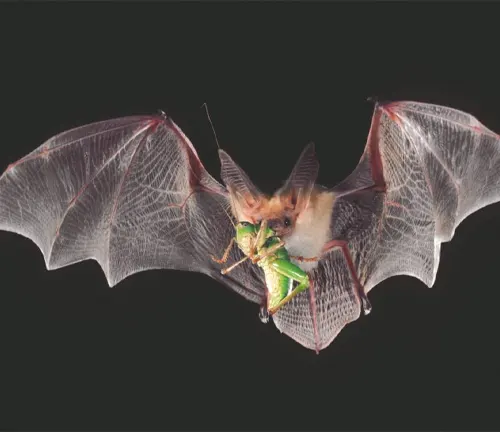
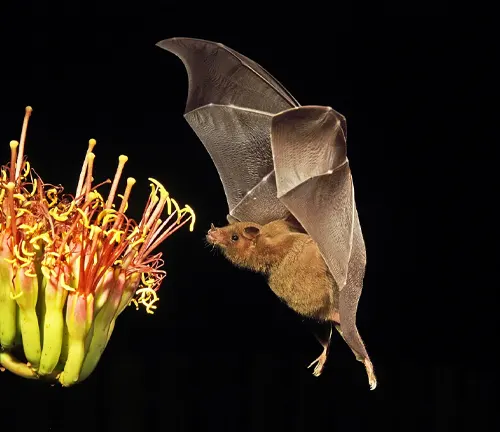
Big Brown Bats are insectivorous creatures, meaning they primarily feed on insects. Their diet consists mainly of nocturnal insects such as moths, beetles, flies, mosquitoes, and other small flying insects. These bats are equipped with specialized adaptations that enable them to hunt and capture prey efficiently during flight.
Using their sophisticated echolocation abilities, Big Brown Bats emit high-frequency sound waves that bounce off objects in their environment. By interpreting the echoes, they can accurately locate and pursue insects in the darkness of night. This echolocation allows them to navigate through cluttered environments and detect prey with remarkable precision.
Big Brown Bats are opportunistic feeders and will consume a wide variety of insect species depending on availability. They are particularly active during the warmer months when insect populations are abundant. These bats play a vital role in controlling insect populations, making them valuable allies in pest management and ecosystem balance.
Reproduction and Life Cycle
Mating Behavior
Big Brown Bats exhibit interesting mating behaviors, especially during the breeding season, which typically occurs in late summer or early fall. During this time, male bats engage in courtship rituals to attract females. These rituals may involve vocalizations, wing-flapping displays, and aerial acrobatics to demonstrate strength and agility. Males compete for mating opportunities, often forming hierarchical social structures within colonies.

Female Big Brown Bats are polyestrous, meaning they have multiple estrus cycles within a breeding season. They have the ability to store sperm after mating, delaying fertilization until conditions are optimal for reproduction in the spring. This reproductive strategy allows females to maximize the chances of successful reproduction while minimizing the risks associated with pregnancy and childbirth.
Gestation Period
After fertilization occurs, female Big Brown Bats undergo a gestation period that typically lasts around 60 to 70 days. During this time, the developing embryo is nourished within the mother’s womb until it is ready to be born. Gestation periods may vary slightly depending on environmental factors and the health of the mother.


Birth and Maturation
Big Brown Bats give birth to live young, known as pups, usually in late spring or early summer. Maternity colonies provide a safe and communal environment for females to give birth and raise their offspring. Newborn pups are small and helpless, weighing only a few grams at birth. They are born hairless and with closed eyes, relying entirely on their mothers for warmth, nourishment, and protection.
Over the course of several weeks, young Big Brown Bats undergo rapid growth and development. They are nursed by their mothers and gradually transition to solid food as they mature. Female pups typically reach sexual maturity at around one year of age, while males may take slightly longer to mature. As they grow, young bats learn essential skills such as flying, hunting, and social behaviors from their mothers and other members of the colony.
Behavior and Social Structure
Nocturnal Habits
Big Brown Bats are nocturnal creatures, meaning they are most active during the night. They spend their days roosting in dark, secluded areas such as caves, attics, tree hollows, and man-made structures. As the sun sets and darkness falls, Big Brown Bats emerge from their roosts to begin their nightly activities.
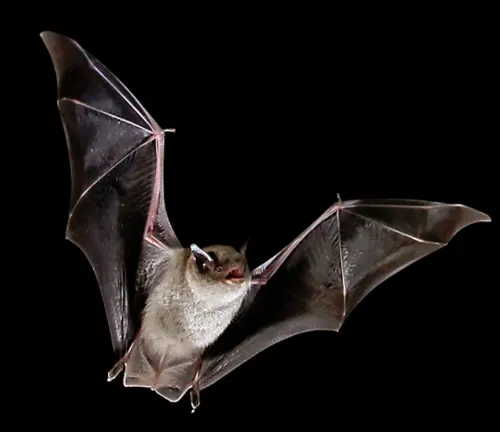
The cover of darkness provides these bats with protection from predators and allows them to exploit the abundance of nocturnal insects that form their primary food source. Big Brown Bats use their keen senses, including echolocation, to navigate and locate prey in the dark. Their nocturnal habits enable them to avoid competition with diurnal predators and optimize their foraging efficiency under the cover of night.
Roosting Patterns
Big Brown Bats exhibit diverse roosting patterns depending on factors such as habitat availability, temperature, and social dynamics. They are known to roost in a variety of locations, including natural structures like caves, rock crevices, and hollow trees, as well as human-made structures such as buildings, bridges, and bat houses.
During the day, Big Brown Bats seek out roosting sites that provide shelter, warmth, and security from predators. They may form colonies consisting of several individuals, particularly during the maternity season when females gather to give birth and raise their young. Maternity colonies offer communal protection and social interaction, allowing females to share parenting duties and exchange information.
Big Brown Bats may exhibit fidelity to certain roosting sites, returning to the same locations year after year, especially if conditions remain favorable. However, they are also capable of relocating to new roosts if environmental conditions change or if disturbances occur in their existing habitats.
Echolocation Abilities
Echolocation Abilities
Big Brown Bats possess remarkable echolocation abilities that play a crucial role in their survival and hunting success. Using echolocation, these bats emit high-frequency sounds, often above the range of human hearing, and listen for the echoes that bounce back from objects in their environment. By analyzing these echoes, they can accurately determine the location, distance, size, and texture of objects, including prey and obstacles, even in complete darkness. This sophisticated sonar system allows Big Brown Bats to navigate through cluttered environments, detect prey with precision, and avoid collisions while in flight.
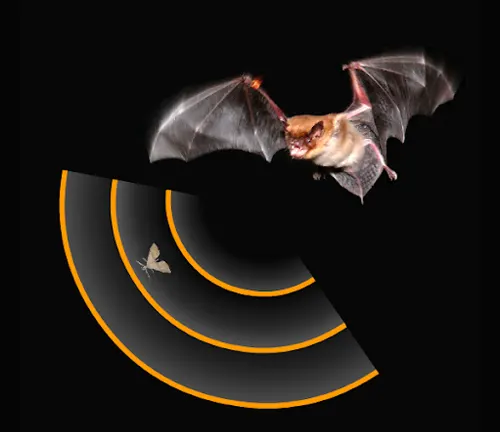
Importance to Ecosystem
Big Brown Bats are essential components of their ecosystems, playing vital roles in maintaining ecological balance and biodiversity. As voracious insect predators, they help regulate insect populations, including agricultural pests and disease-carrying mosquitoes. By controlling insect populations, Big Brown Bats contribute to the health of natural ecosystems, reduce crop damage, and minimize the spread of insect-borne diseases. Additionally, these bats serve as prey for various predators, further supporting the functioning of food webs and ecosystems.

Threats and Conservation Status
Despite their ecological importance, Big Brown Bats face numerous threats that endanger their populations and habitats. Habitat loss and fragmentation due to urbanization, deforestation, and agricultural expansion pose significant challenges to bat survival. Pesticide use, pollution, climate change, and the spread of fungal diseases such as white-nose syndrome also threaten bat populations. Additionally, human disturbances, including habitat destruction, roost disturbance, and direct persecution, further exacerbate the decline of Big Brown Bat populations. As a result, Big Brown Bats are listed as species of conservation concern in many regions, prompting conservation efforts aimed at protecting their habitats, raising awareness, and implementing management strategies to mitigate threats.
Human Interaction and Impact
Human interaction with Big Brown Bats can have both positive and negative impacts on bat populations and ecosystems. While these bats provide valuable ecosystem services, they may also come into conflict with humans, particularly when they roost in buildings or structures. Human disturbance of bat roosts can disrupt breeding, hibernation, and foraging behaviors, leading to stress, displacement, and reduced reproductive success. Additionally, misconceptions and fear of bats may result in negative attitudes and persecution, further endangering bat populations. However, through education, outreach, and responsible management practices, humans can minimize negative interactions and promote coexistence with Big Brown Bats.
Interesting Facts about Big Brown Bat
- Big Brown Bats are capable of flying at speeds of up to 40 miles per hour.
- These bats can live for up to 20 years in the wild.
- They are known to hibernate during the winter months to conserve energy when food sources are scarce.
Myths and Misconceptions
Big Brown Bats are often surrounded by myths and misconceptions that contribute to negative attitudes and fear towards these beneficial creatures. One common myth is that all bats are carriers of rabies, which is not true. While bats can contract rabies like any mammal, the incidence of rabies in bat populations is relatively low, and most bats avoid contact with humans. Another misconception is that bats are blind, which is false. While bats rely heavily on echolocation for navigation and hunting, they also have functional eyesight and can see in low light conditions. Dispelling myths and misconceptions about bats is essential for fostering understanding, appreciation, and conservation of these remarkable animals.
Research and Study Efforts
Scientists conduct extensive research and study efforts to better understand the biology, behavior, ecology, and conservation needs of Big Brown Bats. Research focuses on various aspects of bat biology, including echolocation, foraging behavior, reproduction, migration, roosting ecology, and population dynamics. Studies also investigate the impacts of human activities, habitat loss, pollution, and climate change on bat populations and ecosystems. By advancing knowledge and awareness of Big Brown Bats, research efforts inform conservation strategies, management practices, and policy decisions aimed at protecting bat populations and their habitats.
Coexistence with Human
Promoting coexistence between Big Brown Bats and humans is essential for the conservation of bat populations and ecosystems. This involves raising awareness, fostering positive attitudes, and implementing management practices that minimize conflicts and mitigate negative impacts on bats. Providing alternative roosting sites, conserving natural habitats, reducing pesticide use, and implementing bat-friendly building designs are examples of coexistence strategies. Additionally, educating the public about the ecological benefits of bats and dispelling myths and misconceptions can help foster appreciation and support for bat conservation efforts. By working together, humans and Big Brown Bats can coexist harmoniously, benefiting both wildlife and communities.
Different Species
Eptesicus nilssonii
(Northern Bat)
Found in Europe and Asia, this species is closely related to the Big Brown Bat but tends to have a slightly smaller size and different distribution range.
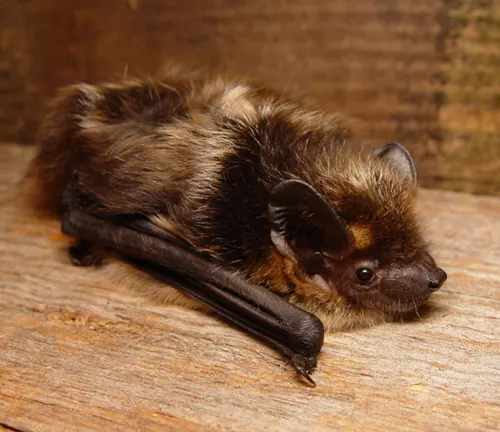

Eptesicus isabellinus
(Isabelline Serotine)
Native to Europe, North Africa, and the Middle East, this species exhibits variations in fur color compared to the Big Brown Bat, often appearing lighter in hue.
Eptesicus bottae
(Brazilian Brown Bat)
Found in South America, particularly in Brazil, this species shares similarities with the Big Brown Bat in size and diet but has a different geographical range.
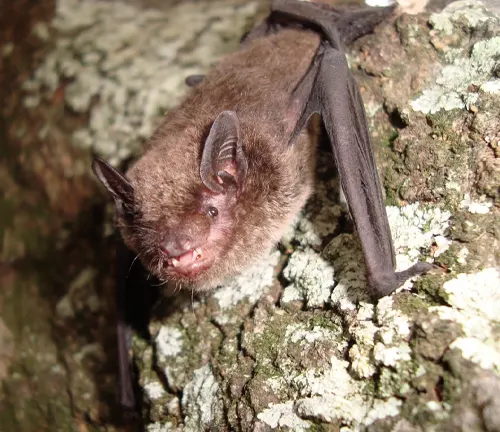
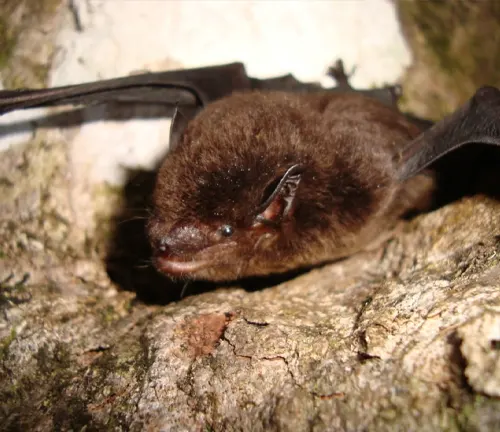
Eptesicus chiriquinus
(Chiriquinan Brown Bat)
Native to Central and South America, this species is similar in appearance to the Big Brown Bat but may exhibit subtle differences in fur coloration and echolocation patterns.
Eptesicus furinalis
(Argentine Brown Bat)
Found in South America, including Argentina and Uruguay, this species is closely related to the Big Brown Bat and shares similar ecological roles within its habitat.
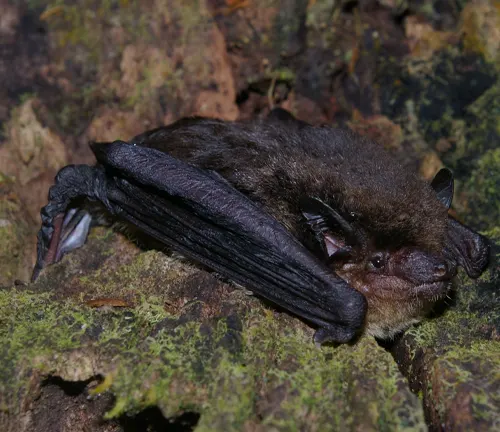
Frequently Asked Questions (FAQs)
- Are Big Brown Bats harmful to humans or pets?
Big Brown Bats are not inherently harmful to humans or pets. They play a crucial role in controlling insect populations and typically avoid confrontation. However, like any wild animal, they may bite if threatened or handled, so it’s best to give them space and avoid direct contact. - Do Big Brown Bats hibernate during the winter months?
Yes, Big Brown Bats are known to hibernate during the winter months in colder regions. They seek out sheltered locations such as caves, attics, or underground structures to conserve energy and survive the harsh winter conditions. - How long do Big Brown Bats live?
Big Brown Bats have relatively long lifespans for small mammals, with individuals capable of living up to 20 years in the wild under ideal conditions. - What threats do Big Brown Bats face in the wild?
Big Brown Bats face various threats in their natural habitats, including habitat loss due to urbanization and deforestation, pesticide exposure, disturbance of roosting sites, and the spread of diseases such as white-nose syndrome. - Do Big Brown Bats migrate during certain times of the year?
While some bat species migrate to warmer climates during the winter, Big Brown Bats are generally non-migratory and may stay in their established habitats year-round, especially if suitable roosting and food sources are available. - How can I distinguish a Big Brown Bat from other bat species?
Big Brown Bats can be distinguished by their relatively large size, dark brown fur, and robust build compared to other bat species. They also tend to have longer ears and broader wings. - What role do Big Brown Bats play in the ecosystem?
Big Brown Bats are important predators of nocturnal insects, helping to control populations of agricultural pests and disease-carrying mosquitoes. They contribute to ecosystem balance and biodiversity. - Are Big Brown Bats solitary or social animals?
While Big Brown Bats are capable of roosting alone, they often form colonies, especially during the maternity season when females gather to give birth and raise their young. These colonies provide warmth, protection, and social interaction. - How do Big Brown Bats communicate with each other?
Big Brown Bats primarily communicate through vocalizations, including echolocation calls used for navigation and locating prey. They also use scent marking and physical interactions to communicate within colonies. - Are Big Brown Bats endangered or threatened species?
While the conservation status of Big Brown Bats varies regionally, they are generally considered to be of least concern on the IUCN Red List. However, localized declines in populations have been observed due to various threats, warranting conservation efforts to protect their habitats and populations.



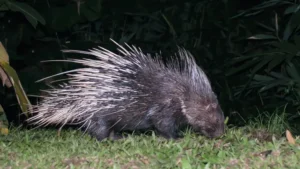
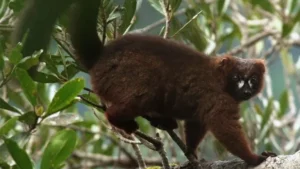
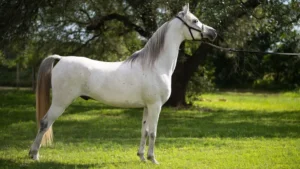



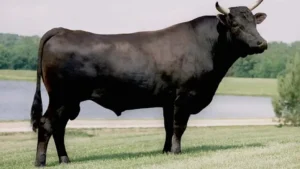
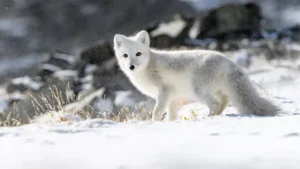

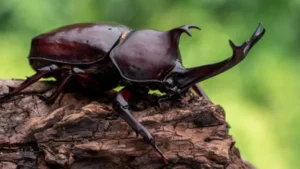

Leave your comment